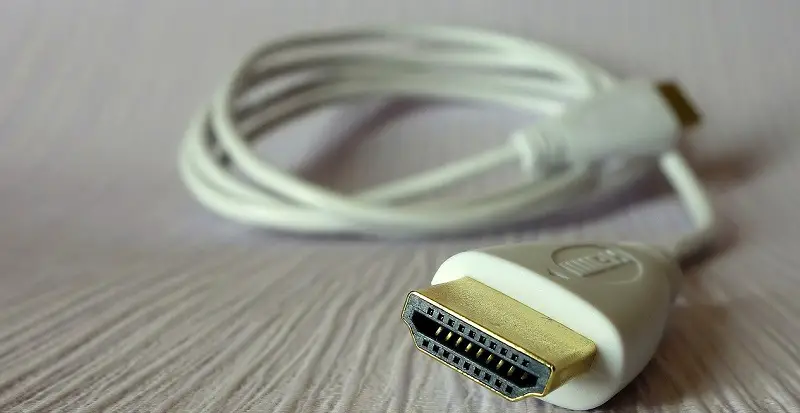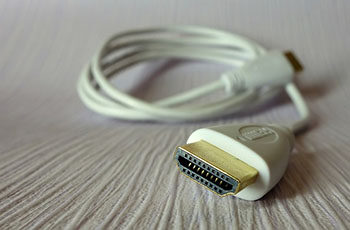It’s no secret that HDMI is the current industry-standard for audio/video interface, and it has a ubiquitous presence on almost every media device manufactured in the last fifteen years. However, not a lot of people are aware that HDMI cables are capable of bidirectional Ethernet communication at relatively high speeds since 2009.
In simple words, HDMI cables allow network data packets to be transmitted right alongside uncompressed video and audio streams. But it raises the question of why most media device manufacturers haven’t adopted the functionality even after so many years.
This information guide will give you a full rundown on Ethernet over HDMI and explain whether it’s a good idea to invest in an HDMI Cable With Ethernet.
What’s an HDMI Cable with Ethernet?

An HDMI cable with Ethernet relies on HDMI Ethernet Channel (HEC), a protocol introduced right alongside Audio Return Channel (ARC) with the HDMI 1.4 release in 2009. It provides a bidirectional network data delivery link between two HDMI-connected devices, allowing them to share an internet connection at speeds of up to 100 Mbit (12.5 Mbyte) per second.
While most HDMI protocols work over any standard HDMI cable, you should still look out for the ones that have “Ethernet” mentioned in the specifications to take advantage of the HEC functionality. However, some high-speed HDMI cables often omit the Ethernet channel to allocate more bandwidth to the audio and video streams.
It’s also worth mentioning that an HDMI cable with Ethernet costs mostly the same as any other standard high-quality HDMI cable.
The Concept Behind HDMI Ethernet Channel
When HDMI 1.4 made its debut, HEC or HDMI Ethernet Channel was pitched as a convenience factor. Rather than relying on two separate cables for AV and Ethernet, users could just use one cable connected to a TV or home entertainment device to fulfill their needs.
After all, Ethernet-enabled HDMI cables allow audio, video, and network data transmissions from the primary source to IP-based smart media devices with zero compromises in quality. Though all of it seemed practical in marketing terms, only a handful of devices managed to put HEC to fair use, and not even the ones available domestically.
Reasons why Ethernet over HDMI didn’t Take Off
HDMI Ethernet Channel showed up at a time when gigabit wired connections were quickly becoming the norm and wireless technology made giant leaps in transmission speeds.
Ethernet and Wi-Fi interfaces were readily available to TV and home entertainment device manufacturers at cheaper fees. It was the least of their priorities to make significant changes to their device’s hardware and software to support such a niche function like HEC.
On top of that, being limited by the 100 Mbit/s bandwidth and the maximum 8-meter cable length didn’t really help the case. It would have certainly been lunacy for the manufacturers to consider HEC over a dedicated Ethernet port or Wi-Fi card, as they reliably delivered better networking speeds without many sacrifices.
Even on desktops and laptops where HEC had the opportunity to bring quality-of-life improvements, the feature was deemed pointless because of its limitations. Since most people were so used to using a regular Ethernet cable or a Wi-Fi access point for internet connectivity, no one found the use of Ethernet over HDMI any better than what was already available back then.
Fast forward to the present, the concept of Ethernet over HDMI is pretty much non-existent now that we have access to high-speed wired and wireless internet connections in our houses.
What about HDMI Audio Return Channel?
HEC is dead, but its companion protocol ARC or Audio Return Channel isn’t. In fact, ever since the release of the HDMI 1.4 standard, ARC used the same pins on the connector as HEC. Thus, they are referred to as HEAC (HDMI Ethernet Audio Control) when combined, which you may sometimes find in the spec charts of HDMI cables.
Fortunately, ARC has made its way through an entire decade and so on due to the convenience it offers in a home entertainment setup. Although HEC uses the same connector pins as ARC and CEC (Consumer Electronics Control), chances are your HDMI-compliant devices don’t support Ethernet over HDMI. Even if they allow you to connect to the internet, it most probably has a dedicated Ethernet jack or an internal Wi-Fi card.
Do you need HDMI ARC or eARC?
If you have a home theater sound system or a soundbar, ARC over HDMI is a useful feature. What it does is establish a communication between the audio and video devices connected directly to the HDMI ports on your television.
When you switch to an HDMI input, ARC intelligently detects it and creates a bidirectional link between the source and audio device, transmitting the audio streams to the sound system connected to your TV over a unified interface. It eliminates the hassle of plugging in multiple cables and allows users to have an overall clean setup.
eARC basically does the same, but its capabilities are enhanced. It gets a massive boost in maximum audio bandwidth, enabling high-quality, multi-channel, lossless audio data to be transmitted from your TV to a sound system.
Unlike ARC, eARC is facilitated only on HDMI 2.1 certified devices and select HDMI 2.0-compliant products.
Is there any use for HDMI Cable with Ethernet?
Very few devices support the HDMI Ethernet Channel, so there really aren’t many practical use-cases for Ethernet over HDMI.
An HDMI to Ethernet converter lets you connect a standard HDMI cable on one end and a Cat5 / Cat6 network cable on the other end, giving you audio/video output over longer distances without any quality loss. However, it’s a niche use-case for the average consumer and costs a lot of money to set up.
Related – HDMI ARC vs Optical (TOSLINK): Which Connection is Better?
Verdict
We hope this informational guide has answered your questions regarding HDMI Cable with Ethernet. Despite being practical on paper, the HDMI Ethernet Channel never really stood a chance against the mainstream wired and wireless network transmission interfaces.
If you have a smart streaming device or internet-enabled television, the only way to get it connected is to use the dedicated Ethernet port or Wi-Fi solutions. Since ARC (Audio Return Channel) is accepted on almost every HDMI-enabled device, it should work out of the box.
